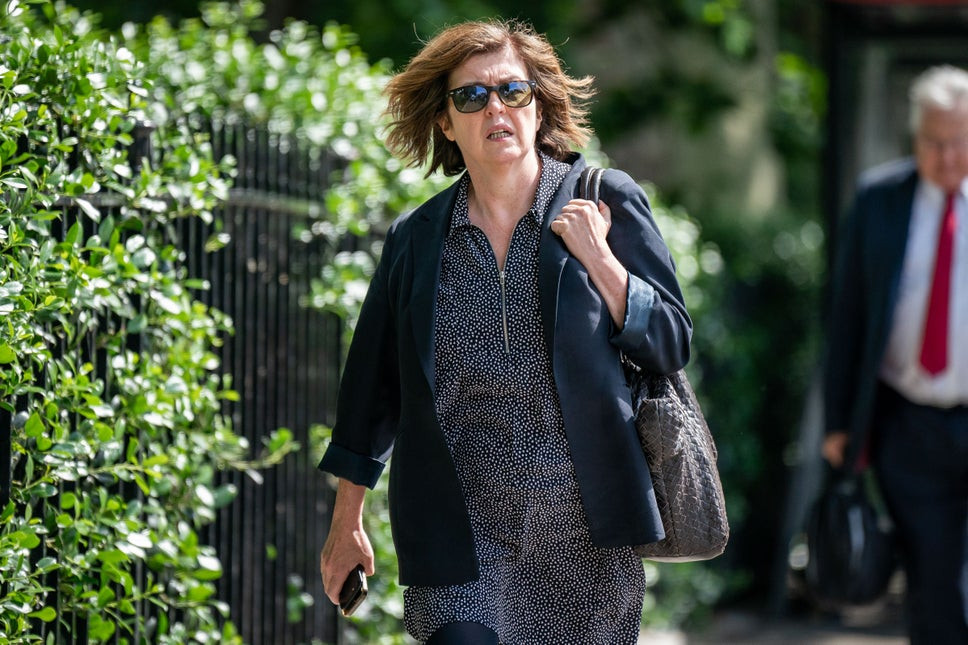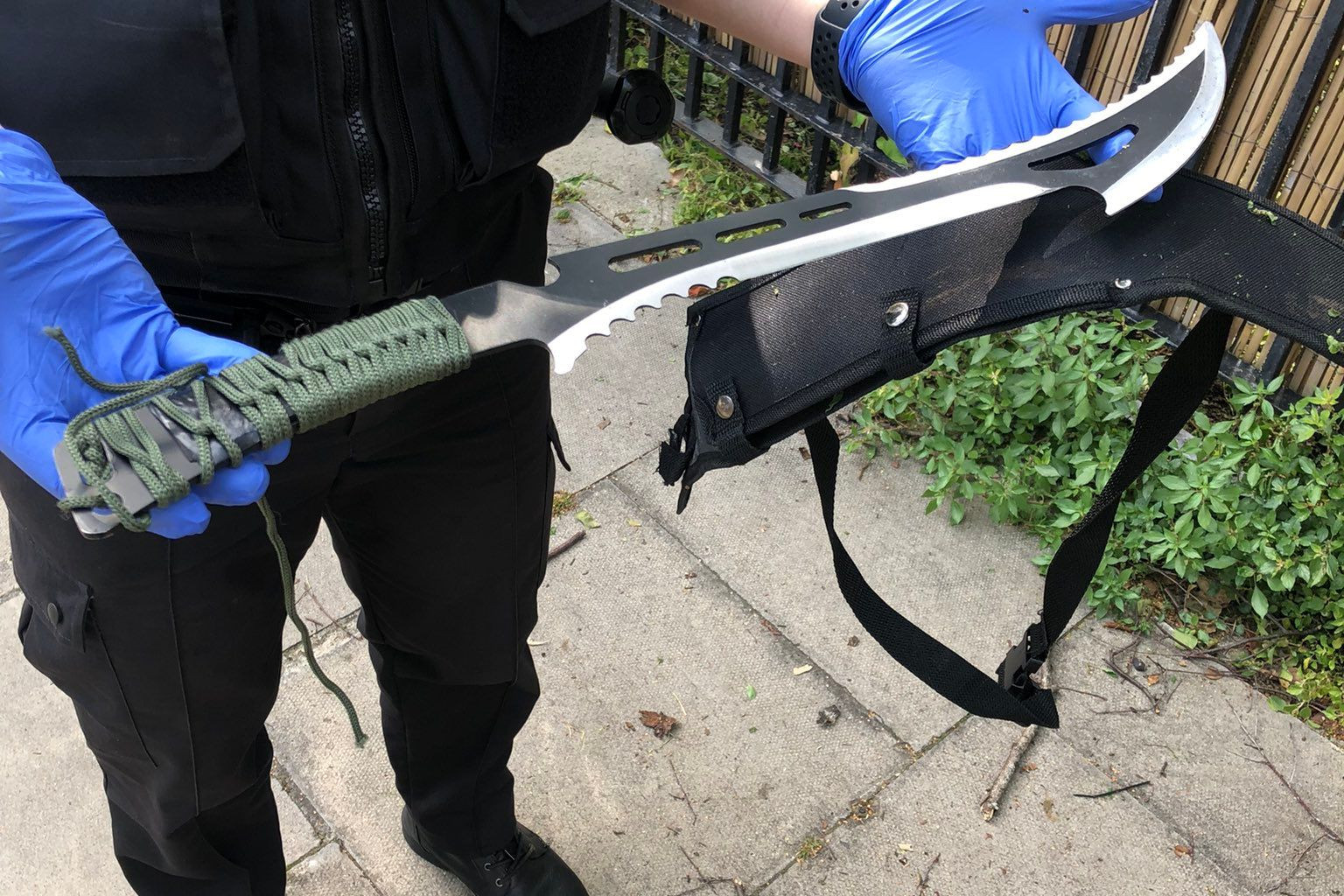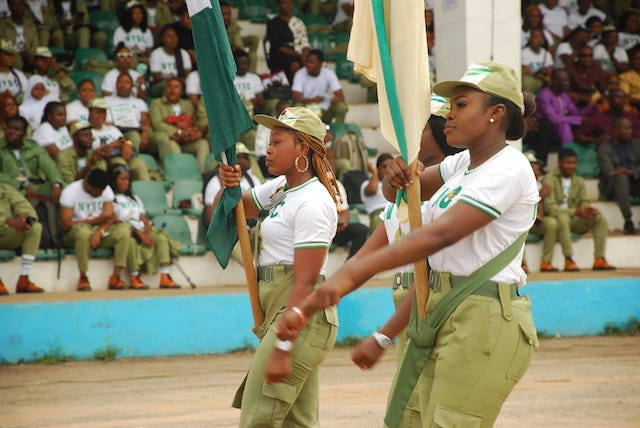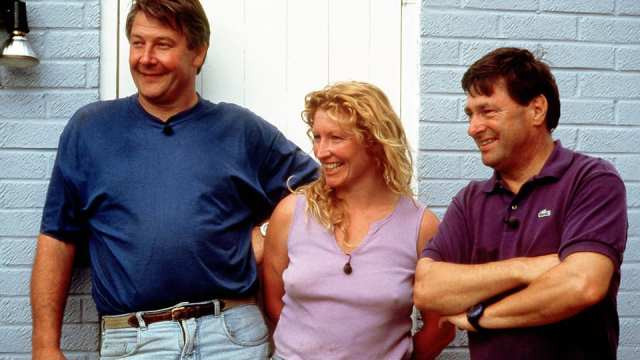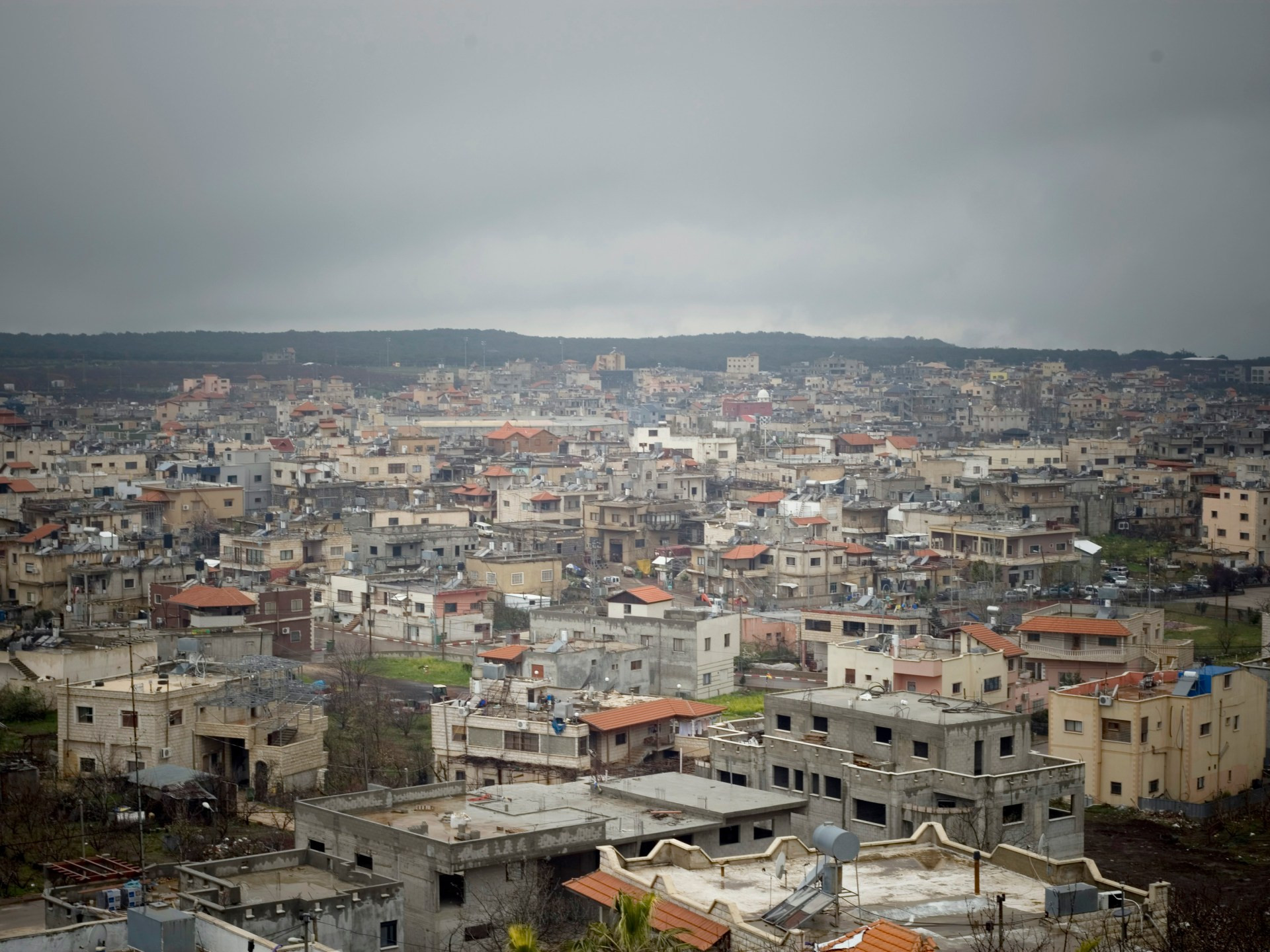No monument or commemorative plaque explains what happened here. There is no neatly tended memorial of fluttering flags and cut flowers, as there are in dozens of nearby spots celebrating the lives of dead IRA ‘volunteers’.
It would be easy to forget that behind the steel-shuttered gates and jagged glass-topped walls of the Casement Park stadium in Belfast occurred one of the most unspeakable acts of bloodshed in Northern Ireland’s troubled history.
Two British soldiers who had strayed inadvertently into the path of a funeral were violently wrenched from their car, savagely beaten, stripped and thrown over the stadium wall with a 9ft drop on the other side.
Then the coup de grace: they were bundled into a taxi and driven to nearby wasteland where they were shot at point blank range, six bullets in one, five in the other.
In all the mind-numbing murder and mayhem that scars Ulster, the events of March 19, 1988, rank among the grimmest of atrocities. The more so because it all happened in plain sight.
The unblinking eye of an Army helicopter camera crew hovering at 500ft transmitted what was happening in real time to police and military commanders watching in impotent fury. TV and media crews were also powerless witnesses to the attack.
As the two soldiers were dragged away to certain death, an observer recorded of one of the two: ‘He didn’t cry out; just looked at us with terrified eyes as though we were all enemies in a foreign country who wouldn’t have understood what language he was speaking if he called out for help.’
The wickedness of what happened, of a mob behaving like a pack of mad, wild dogs, was being recalled this week as a furious row erupted over the role of Sir Keir Starmer’s chief of staff, accused of ‘subverting’ ministers in efforts to pour £310 million into rebuilding the now derelict stadium so it can host matches in the Euro 2028 football championship.
The Controversial Figure
Many are questioning not just the wisdom of ploughing taxpayers’ cash into a place synonymous with evil but also of supporting a development that goes to the very heart of the divided Province.
So who is this figure who was reported to have angered our elected officials by ‘personally dominating’ negotiations in what they claim is a ‘constitutionally improper’ way?
Step forward Sue Gray, 66, the former civil servant who presided over the ‘Partygate’ inquiry into lockdown parties held in Boris Johnson’s 10 Downing Street.
Her report suggested a failure of leadership inside No 10 and was cited by Boris’s allies as playing a decisive part in his resignation.
She quit the civil service in March last year to join Starmer’s team, prompting a Cabinet Office inquiry that found she had broken the civil service code, which sets out the behavioural expectations of civil servants. However, Acoba, the appointments watchdog, later approved her Labour post.
These days, as the Prime Minister’s closest adviser, she wields more influence over the Cabinet than she ever did as a mandarin. And in Northern Ireland, where she once ran a pub, that authority is being keenly noted.
The 'Friend in Court'
Sinn Fein’s economy minister Conor Murphy, who was convicted of IRA membership and possession of explosives and to whom Gray is said to be ‘very close’, purred with unmistakeable satisfaction about her position: ‘With Sue Gray, who was previously from here and is now part of [the] Leader’s office . . . I think at least we have a friend in court, so we can certainly have access . . . directly to Downing Street.’
Not everyone, however, is celebrating. Many want to know why Gray — who demonstrated a sense of humour failure last week when she complained about photographers taking pictures of her wearing a flamboyant outfit resembling pyjamas — has been so vociferous in supporting what is seen as a sensitive project.
There is unease about her close involvement as well as questions about the scope of her remit. Gray’s son Liam Conlon, a newly elected Labour MP, is also enthusiastic about the Casement development.
Liam, whose father Bill Conlon is a country & western musician, is chairman of the influential Labour Party Irish Society. Matthew Doyle, a previous chair of the society, is now Starmer’s director of communications.
Gray worked closely with Sinn Fein when she was permanent secretary in Northern Ireland’s department of finance and she and her husband still have a home in a County Down beauty spot.
The Backlash and the Inquiry
Senior Tories are demanding an inquiry. John Glen, the shadow paymaster general, is concerned that she has once again broken the civil service code, this time governing special advisers, and wants Cabinet Secretary Simon Case to investigate.
‘Civil servants must always act in a way that is professional and that deserves and retains the confidence of all those with whom you have dealings and makes sure public money and other resources are used properly and efficiently,’ he says.
‘If a special adviser [like Sue Gray] is pressuring civil servants into spending hundreds of millions of taxpayers’ money on an unfunded pet project, this would appear to be contrary to the letter and spirit of the civil service code.’
Gray’s links to Northern Ireland have attracted considerable curiosity. Some 40 years ago she gave up a well-paid Whitehall job and moved to Ulster to become landlady of the Cove Bar, close to the border with the Irish Republic in a part of rural County Down that was so dangerous for the Army and police it was known as ‘bandit country’.
Even for a daughter of expat Irish parents it was an unusual career move. Gray had grown up in London, joining the civil service straight after leaving her Catholic state school.
Almost a decade later she gave up her desk job to run a pub and while she remained behind the bar, husband Bill, a joiner and part-time musician, was in charge of entertainment.
Neither had any experience of the pub trade beyond the fact that Gray’s mother had worked as a barmaid in Tottenham. And after little more than a year they gave it up and returned to London.
All the same, she has spoken of affection of her time pulling pints in the Cove. ‘It’s a very sociable occupation, very hard work, but I loved meeting people.’
This unexpected aspect of her CV is just one of the reasons why her enthusiasm for Casement Park has been raising eyebrows.
A Place Synonymous with Evil
On the streets of Belfast, however, the issues are much starker. For many on the Unionist side say they would be fearful of going to watch a football match in Casement Park.
One figure told us: ‘I would not feel safe setting foot in that stadium unless I had a team of armed protection officers and I also feel it would be hugely disrespectful to those two young soldiers who were brutally beaten to death.
‘This is a terrible misstep by the Starmer government. Even Tony Blair, for all his faults over the peace process, would, I think, run a million miles from this.’
Like virtually everything in Ulster it is politically contentious and the row is dividing Loyalist from Nationalist.
In the Stadium Bar, in the heart of the Protestant Shankill Road, drinkers said they would not consider venturing into a stadium in ‘IRA country’.
One customer, who introduced himself as ‘Billy’, said: ‘Let’s put it like this: what national anthem are they going to play? God Save The King or the Republic of Ireland’s anthem. Nationalists don’t support the Northern Ireland team, they support the Republic.’
One reason for all this uncertainty and controversy is because Northern Ireland already has a national football stadium, Windsor Park, where they play home internationals.
But it has a capacity of only 18,000 and European championship tournament rules demand stadia must seat 30,000. According to the Irish Football Association there is ‘no route to fund an expansion’ of Windsor Park.
The larger Casement Park was chosen as a venue in Britain and Ireland’s successful bid to host the next Euros. But leaving aside its troubling history, it is plagued with other cultural problems.
Derelict for more than ten years, it is owned by the Gaelic Athletic Association (GAA) who, if the development goes ahead, will retain control after the Euros are over. And that, say critics, mean it will probably never host another game of football.
‘Are we seriously proposing to spend all those millions for what is likely to be just four matches during the Euros?’ said Billy. ‘The GAA will then have a wonderful new stadium to hold rock concerts in and they would get all the money.
A Political Football
Baroness (Kate) Hoey, former sports minister under Blair, says the entire scheme is ill-conceived. ‘Most people find it perplexing and concerning that the self-confessed priority of the new Labour Government should be spending hundreds of millions on Casement,’ she told us.
‘About 8,000 seats are to be included in the stadium build, only to be ripped out once the Euros end. Not only is it financially irresponsible but amounts to clearly prioritising the political demands of one section of the community.
‘The unfairness of millions extra going to the GAA will not just be perceived as being unjust, it will sour relations with the many loyal Northern Ireland citizens who genuinely wished Labour well.’
She added: ‘All big sporting events are aimed at leaving a legacy for the sport. There will be no legacy for Northern Ireland football at any level.’
Baroness Hoey has also warned that the politically divisive nature of the project and the fact that the GAA ‘continues to name grounds and trophies after former IRA terrorists’, cannot be ignored.
If its walls of crumbling brick could talk, what a story Casement Park could tell. It is only three miles as the crow flies but a world away from the Shankill Road with its vivid murals of the late Queen Elizabeth, King Charles and Loyalist flute bands.
It is in Andersonstown in the heart of west Belfast where Irish tricolours fly alongside the Palestinian flag and the murals are of scenes from Gaza and of dead IRA hunger strikers.
Republicans become sentimental at the mere mention of Sir Roger Casement, a former civil servant turned gun-smuggler who was executed for treason at Pentonville prison in London because of his part in arming the Easter Rising against British rule in 1916.
The park was opened as a stadium for Gaelic sport in 1953. And while some of the violence in Ulster is often shrouded in romantic myth, there is nothing misty-eyed about the killings of Corporals Derek Wood and David Howes some 36 years ago.
A Grisly Incident
The pictures of their final moments when Corporal Wood drew his Browning 9mm pistol and fired a shot in the air – not at the thugs about to kill him – are haunting still.
The two were driving through west Belfast when they found themselves in the midst of a huge funeral procession for a victim of a Loyalist shooting. Quite why they were there is unknown, they were not undercover soldiers – despite the IRA’s later boast that they were – but members of the Royal Corps of Signals.
It is possible that Corporal Derek Wood, 24, from Carshalton, Surrey, an Ulster veteran, was familiarising his younger colleague Corporal David Howes, 23, from Northampton, with the area.
They were in an unmarked Army pool car, but crucially it had no radio. The silver VW Passat was immediately boxed in by London-style black taxis, and a mob shouting ‘Kill the Brits’ descended using a wheel brace and stepladders seized from press photographers to smash their way into the car.
The extreme violence with which they were attacked was brutal and sickening. It was also very public.
Within minutes the two men were hauled from either side through the car’s smashed windows and punched and kicked to the ground. They were then dragged into nearby Casement Park, away from the media’s cameras and out of sight of the Army’s circling Lynx helicopter, where the beating continued.
There they were also stripped to their underwear and socks and searched. The thugs found a military ID on Cpl Howes which was marked ‘Herford’, the site of a British military base in Germany but which the IRA misread – probably deliberately – as Hereford, home of the SAS.
The defenceless men were pitilessly tossed over the stadium wall. From there they were put into the back of a taxi and driven 200 yards to waste ground near Penny Lane where, gangland style, they were murdered.
Derek Wood was shot six times, twice in the head and four times in the back. Some of the bullets came from his own service issue handgun. David Howes was shot five times, once in the head above the right eyebrow and four times in the back.
Much of the grisly incident was recorded by the Army’s ‘heli-telly’ but uncertainty and ‘disbelief’ about the identity of the two men being assaulted led to a critical delay before the order was given by officers to try to save the men’s lives.
Father Alex Reid, a priest who had earlier tried to intervene before being ordered away by the IRA, ran to the spot when he heard shots.
Photographs of the savagery, among the most harrowing images of the Troubles, were beamed round the world. They painted no idealistic picture of shamrock republicanism but rather bloody, violent inhumane killing.
Two men were later convicted of the murders and sentenced to life imprisonment with a recommendation that they spend a minimum of 25 years behind bars. In 1998, as part of the peace process, both were released after serving just nine years.
A Place of Shame
No wonder figures such as Baroness Hoey find the whole concept of a football stadium with its connotations of sportsmanship and fair play so deeply unsettling.
‘Casement Park is where two young British soldiers were stripped almost naked, thrown over a steep wall with their beaten bodies crashing on to the ground below,’ she said. ‘They were then taken away and shot dead by the IRA – that act on its own will make it very uncomfortable for the most ardent supporters of football to attend that venue.’
Downing Street declined to be drawn on Gray’s role. A spokesman, said: ‘You would expect the PM’s chief of staff to work on a broad range of areas. The Northern Ireland Office and Department of Culture are leading on this, not No10.’
All in all, perhaps it is just as well there is no memorial to the infamy that took place at Casement Park.




